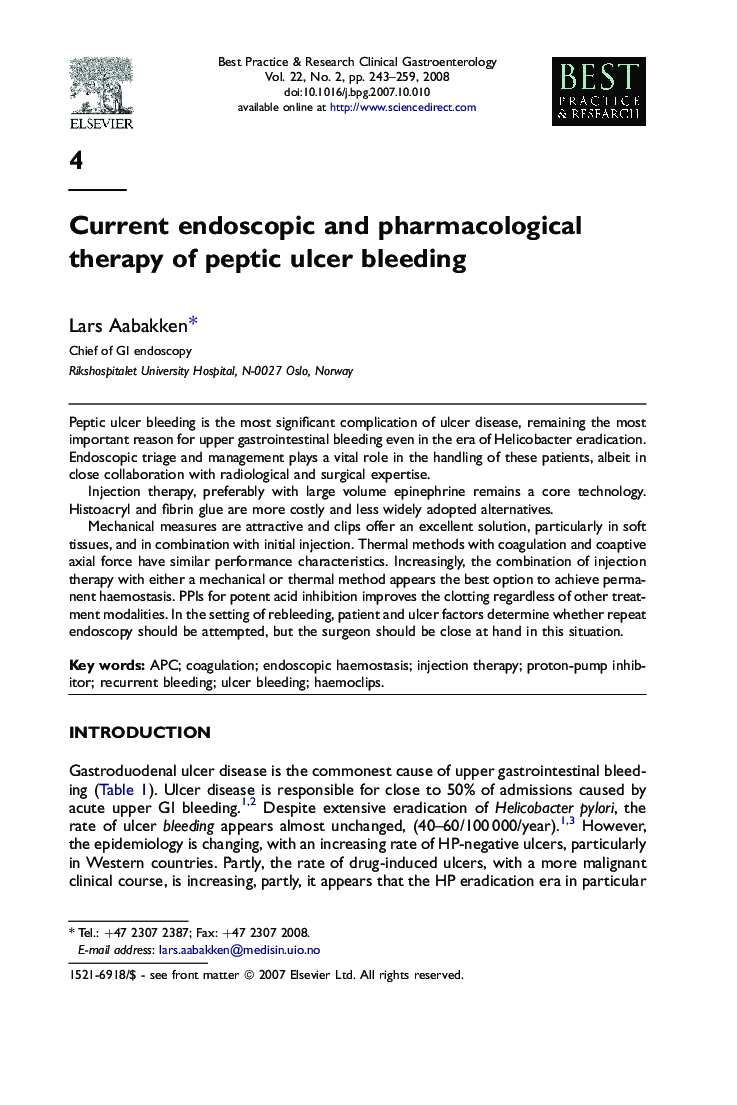| Article ID | Journal | Published Year | Pages | File Type |
|---|---|---|---|---|
| 3254698 | Best Practice & Research Clinical Gastroenterology | 2008 | 17 Pages |
Peptic ulcer bleeding is the most significant complication of ulcer disease, remaining the most important reason for upper gastrointestinal bleeding even in the era of Helicobacter eradication. Endoscopic triage and management plays a vital role in the handling of these patients, albeit in close collaboration with radiological and surgical expertise.Injection therapy, preferably with large volume epinephrine remains a core technology. Histoacryl and fibrin glue are more costly and less widely adopted alternatives.Mechanical measures are attractive and clips offer an excellent solution, particularly in soft tissues, and in combination with initial injection. Thermal methods with coagulation and coaptive axial force have similar performance characteristics. Increasingly, the combination of injection therapy with either a mechanical or thermal method appears the best option to achieve permanent haemostasis. PPIs for potent acid inhibition improves the clotting regardless of other treatment modalities. In the setting of rebleeding, patient and ulcer factors determine whether repeat endoscopy should be attempted, but the surgeon should be close at hand in this situation.
